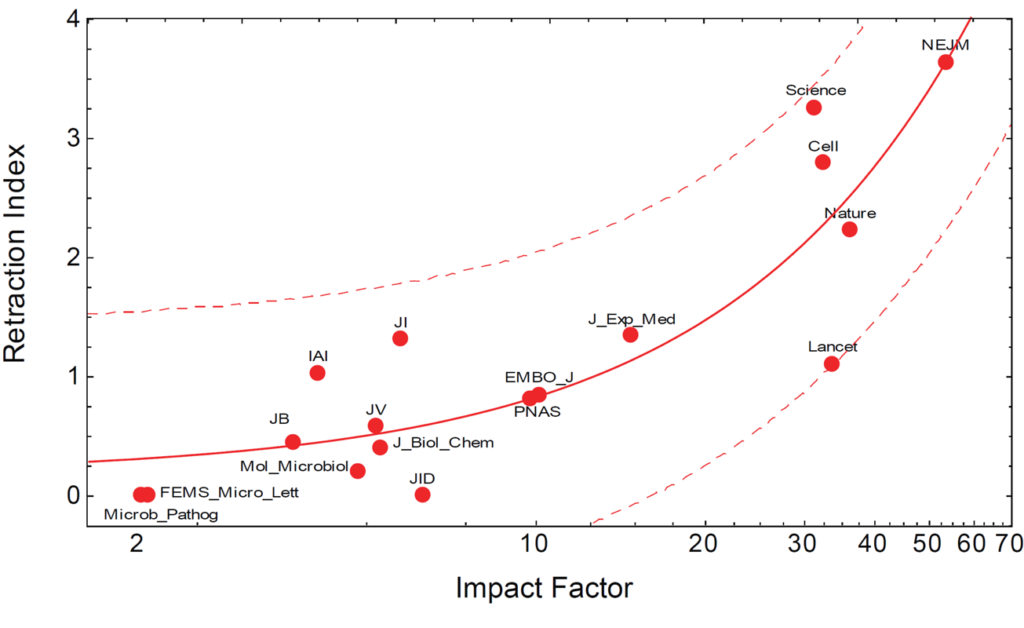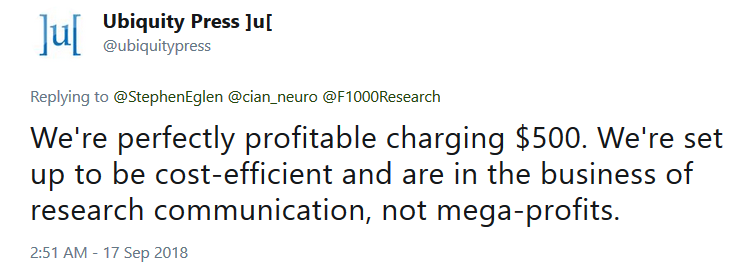The New England journal of Medicine has come out strongly against Open Access. Apparently, this journal does not seem to value access to medical information very highly. This lack of valuation could be due to several reasons. For one, the NEJM is leading the medical publishing industry in retractions:

From this perspective, it would make sense to not endanger the public with highly unreliable medical information until it has been properly vetted.It could also be that the journal thinks that science (or medicine in this case) either goes their way or the highway. This interpretation would be supported by their 2016 editorial, in which they branded every scientist, who used scientific data that they had not collected themselves for their research as “research parasites“. Now there are eponymous awards.
Finally and perhaps equally likely (the reasons are, of course, not mutually exclusive) it could simply be about money. In their public 2016 tax return (does using their numbers here make me a research parasite, too?), the NEJM lists the following items, all p.a. and in US$:
Publication revenue: 103,145,834
Revenue less expenses: 3,896,197
Salaries:
- Editor in Chief: 702,324
- Vice president, publishing: 472,499
- Vice president/General counsel: 417,405
- Executive editor: 393,059
- Former executive vice president: 383,007
- Executive vice president: 380,480
- Executive director, global sales: 368,254
- Executive deputy editor: 328,461
- Deputy editor: 321,468
- Vice president, Finance: 321,053
Salary sum: 4,088,010
These numbers have to be put into perspective within the wider publishing ecosystem. In contrast to this blog post, publishing of research articles costs serious money. To make a peer-reviewed manuscript public, total costs of several hundred US$/€ accrue. These costs are fairly similar across publishers, see, e.g., this overview. Other publishers confirm these numbers:

According to Web Of Science, the NEJM (2016 Impact Factor: 72.406) has published 328 citable items in 2016. Of course, they have published many more articles that can in principle be cited (1,304 of those, to be exact), but while all their citations are counted in the numerator of the impact factor (IF) calculation, these 1,304 “missing” articles are not counted in the denominator. This is common practice and each journal negotiates what gets counted with Clarivate Analytics, the company that publishes the IF. It is reasonable to assume that only citable items contain valuable scientific or medical research for which the public would have to pay to have them published in an Open Access scenario, while the other articles are opinion or news articles, either commissioned or written by in-house staff.
Following the reasoning put forth by publishers such as SpringerNature, that Open Access publication charges should provide publishers with the same publication revenue as the current subscriptions, in 2016 the public would have had to spend approx. US$103,145,834 for the 328 research-type articles NEJM publishes annually.
This would amount to an article processing charge (APC) for NEJM of around US$314,000.
Or, phrased differently, the current business model of NEJM entails the tax-payer paying more than US$300k for each research article in NEJM, which, at the same time:
- pays their management staff the 3-7 fold income of one of their professor-authors
- for each research-type article, cross-subsidizes about four other news-type or opinion articles, some of which insult scientists
- pays for the rejection costs of 95% of all submitted articles
- overpays the actual publishing costs by about 1,200-fold
In comparison, the 30k€ estimated to be paid to Nature branded journals look like a downright bargain. When one compares cost per IF point, one can see that for, e.g., Nature itself, an author would pay about 1,000-2,000€ per impact point, while they would have to pay more than $4,000 per impact point for an NEJM article.
While both journals are leading the industry in terms of unreliable science, one could also, from an author’s perspective, conclude that shoddy science may be less likely to be detected at Nature, definitely another plus if one wants to get published but doesn’t want to get caught.
But then again, at many medical departments and schools, what counts isn’t efficiency nor reliability, but raw IF power. In that case, there would be little other choice than to add 300k to the next grant application, in case NEJM ever went APC-OA, despite this recent editorial.
P.S.: Alternatively, NEJM authors could just get a Rolls Royce instead.













Direct link to the figure with NEJM’s retraction index: https://www.ncbi.nlm.nih.gov/pmc/articles/PMC3690355/figure/F1/ (had to share it elsewhere).
Thanks!